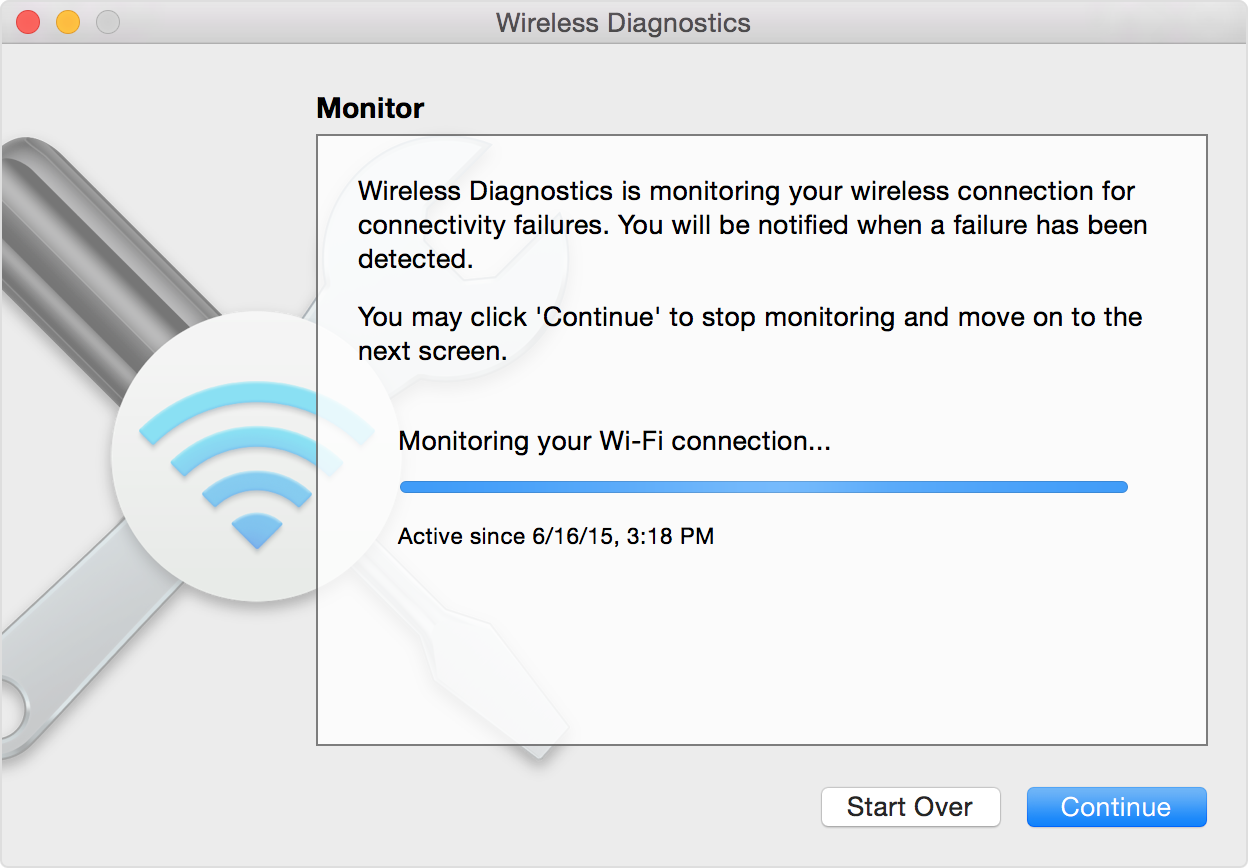

- #MAC OS WIFI DIAGNOSTICS HOW TO#
- #MAC OS WIFI DIAGNOSTICS MANUAL#
- #MAC OS WIFI DIAGNOSTICS SOFTWARE#
- #MAC OS WIFI DIAGNOSTICS MAC#
Once the scan is complete you’ll be prompted to enter additional information about your network, but that’s purely for record keeping. You may be told your network is behaving as expected, but it’s still worth doing the test in order to get actual recommendations from the app.
#MAC OS WIFI DIAGNOSTICS HOW TO#
The easiest way to get an idea of how to fix your Wi-Fi using Wireless Diagnostics is to let the app make determinations by clicking Continue, at which point the app will start scanning your network.
#MAC OS WIFI DIAGNOSTICS MANUAL#
From here you have a couple of options: Let macOS go through its automated diagnostic routine, or open up one of the other tools contained in Wireless Diagnostics to make a manual diagnosis.įigure B The first screen you’ll see when opening the macOS Wireless Diagnostics app. When you open Wireless Diagnostics you’re greeted with the screen shown in Figure B. Troubleshooting Wi-Fi problems with macOS Wireless Diagnostics

#MAC OS WIFI DIAGNOSTICS MAC#
You can find Wireless Diagnostics on a Mac in a couple of ways: Use Spotlight Search (the default key combo to open it is Command + Space Bar), or by holding down the Option key and clicking on the Wi-Fi icon on the menu bar, which reveals several hidden options ( Figure A), among them the Wireless Diagnostics tool.įigure A How to find macOS Wireless Diagnostics from the menu bar by pressing and holding the Option key. Some problems with Wi-Fi have to do with your local internet being congested by the number of users in the area, and there’s nothing you can do about that besides switching providers in the hopes that things improve.Īs for problems with your connection that you can control, Wireless Diagnostics has you covered.

To be clear, not all common Wi-Fi problems can be addressed using Wireless Diagnostics in macOS. There’s no need to pay for a premium product when Apple has built a Wi-Fi analytics tool right into macOS Catalina.
#MAC OS WIFI DIAGNOSTICS SOFTWARE#
Troubleshooting and fixing W-Fi problems can be done right from your Mac, but wait before you run to the internet to search for the best Wi-Fi troubleshooting software for macOS. SEE: Future of 5G: Projections, rollouts, use cases, and more (free PDF) (TechRepublic) Networking: Must-read coverageĥ programming languages network architects should learn (free PDF)īehind the scenes: A day in the life of a database administratorĢ0 steps to decommission a redundant data center facilityġ7 Terminal commands every user should know The good thing is that some of them may be within your control. If you live in a neighborhood where more people are working from home, children are going to school remotely, or neighbors are stuck in place it’s entirely possible that you’re experiencing Wi-Fi problems. You also know that the rapid expansion in remote work due to the COVID-19 pandemic has resulted in some serious internet slowdowns and potential Wi-Fi problems, too. If you work from home you know how important a good Wi-Fi connection can be. Image: Andrii Panchyk, Getty Images/iStockphoto

macOS has a built-in tool that can scan your wireless network and make all the recommendations that a paid tool does. There's no reason to turn to third-party tools for solutions to your Wi-Fi woes. wcap file is saved to the diagnostics report location on your Mac.How to fix common Wi-Fi problems with the macOS built-in Wireless Diagnostics app Select a channel and width, then click Start to begin capturing traffic on that channel.


 0 kommentar(er)
0 kommentar(er)
